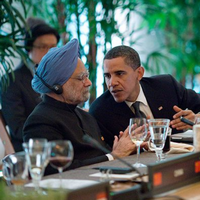Judging by the atmospherics on display during last week's inaugural U.S.-India Strategic Dialogue, the bilateral relationship between the two countries appears to be on solid footing. U.S. Under Secretary for Public Affairs William Burns called the relationship "one of the defining partnerships of the 21st century," while U.S. Secretary of State Hillary Clinton spoke of a joint responsibility to "determine the course of the world." U.S. President Barack Obama even made a surprise visit at the dialogue's reception, and announced that he would visit New Delhi in November.
Yet this flowery rhetoric masks the complex realities of what has been and continues to be a testy relationship between Washington and New Delhi. Even today, Indians worry that the United States is cozying up to Pakistan and China at their expense, while some in Washington charge that India is too caught up with its "neighborhood" concerns to assert its influence on the world stage. If the two countries hope to forge a stronger partnership in the 21st century, they will have to navigate past sharp disagreements and bridge wide perception gaps.
Divergent interests kept India and the United States estranged during the Cold War. India's policy of "moral nonalignment" in the 1950s was viewed in Washington as immoral, while the U.S. arming of Pakistan after 1954 as part of a global containment policy engendered much mistrust in New Delhi. Estrangement continued through the 1970s and 1980s, as India drifted toward the Soviet camp, while the U.S. pursued rapprochement with China and armed Pakistan to undermine the USSR. While the end of the Cold War did lead to some bilateral cooperation, including joint military exercises in the 1990s, India's nuclear test in 1998 -- which it viewed as retaliation for Pakistan's nuclear tests -- drew Washington's ire. It was only with the signing of the civilian nuclear deal under the Bush administration in 2008 that the relationship began to really take off.

